The Ford Fiesta has spent almost an entire lifecycle munching its way through this kind of test. For the better part of a decade now, it has seen off competitors with the remorseless authority of a wheeled Frankel (the racehorse, that is, not Andrew).
Indeed, the gap to the chasing pack has proved so resilient that it seemed plausible it might simply continue doing so until it was finally replaced.
Now, in a way, it has been. When Mazda came to remake the Mazda 2, the platform it tore up with the intention of improving was the one it co-developed with Ford when the manufacturers were joined at the hip – the same one that still underpins the Fiesta. This makes the new 2 doubly intriguing.
Not only is it a new and important car in its own right, but it also represents the direction in which one of the Fiesta’s original architects thinks the next generation of supermini ought to go.
The bearing it has chosen – away from a simple, nimble monopod and towards a scaled-down five-door C-segment hatch – is shared by the other major contender to have appeared in the past six months: the Skoda Fabia.
Unlike the 2, the Fabia has never been a bullet-shaped runaround in the Fiesta mould, and it’s telling that Skoda’s stated intention of attracting younger buyers has not turned it into one. Instead, both it and the 2 are built to fill out the modern-day B-segment, a class within touching distance of becoming a quarter of the industry’s entire new car market in Europe.
Read the 2015 Skoda Fabia review
Driven by a relentless wave of downsizers, the supermini has matured from a prospective second car into the only car some people could ever realistically envisage buying brand new.
The Fabia and 2 are the sophisticated, well-equipped, cost-effective and civilised solutions rolled out to meet the modest motoring aspirations of a generation.Aesthetically, the differences between them and the Fiesta are plentiful but converge specifically on the different relationship between the base of the A-pillars and the front axle.
Whereas the Ford’s A-pillars finish practically over the wheel arches, the new contenders put some space between them, affording them longer bonnets and less MPV-like profiles. Both are longer than the Fiesta, even if the Skoda’s wheelbase is marginally shorter (the car getting a significantly bigger boot). That they look larger is probably more important than the fact that neither manages to be prettier than the Ford, pound per yardage being a crucial equation in most buyers’ minds.
Given its age, it is a wonder that the Blue Oval’s draughtsmanship isn’t now as painfully dated as a decade-old Green Day album, although that perception changes when you open the driver’s door and climb inside.
The Fiesta’s interior, a so-so environment for some time, now crumbles into ruin when measured against either foe. The objective of both the Fabia and the 2 – realised in slightly different ways – is to swaddle their occupants (of which there could more easily and comfortably be four than in the Fiesta) in the fit and finish normally associated with larger, more expensive cars.
The Fabia does this by being crisply handsome and supremely legible in the house style of its Volkswagen parent, and the Mazda by being surprisingly imaginative, nattily assembled and great looking.
Tested in comparable mid-range trim (SE for the Fabia and SE-L Nav for the 2), each is better equipped than the similar-priced Zetec-spec Fiesta, although this is probably of less importance than the fact that each has a massive-inch infotainment screen where the Ford is still lumbered with a monochrome display little bigger than a child’s fist.
Even if you still considered its oil spill of a shiny plastic dashboard contemporary, the screen dates the car as assuredly as a tape deck did in the mid-1990s. Because no switches can be swept onto it, Ford continues to vomit them onto the centre stack.
Switching on the Fiesta doesn’t immediately help with first impressions, either. The 99bhp 1.0-litre Ecoboost may very well be a modern marvel of cylinder elimination, but at idle it’s as wispy as a rustling willow.
Although you’d expect that from the only three-pot in attendance here, it doesn’t alleviate the manoeuvring-speed impression that you’re parking a very quiet sit-on lawnmower.
Read the Ford Fiesta review
Somewhat counter-intuitively, its clutch is comparatively heavy, as is the steering. In contrast, the Fabia, equipped with the latest 89bhp version of VW’s turbo 1.2 TSI, turns over, pulls away and steers with the easy grace of a piece of machinery expertly tuned to harmonise itself with your expectations. The premium that Skoda places on usability stands out even in this company.
The new 2 isn’t far behind it, though. Like most Mazdas, there’s push-button start, which I like. The 89bhp 1.5-litre Skyactiv-G motor doesn’t quite have the smooth idleof the VW unit, but because it’s unencumbered by a turbocharger, it revs that bit cleaner.
What really sets the scene, though, is the five-speed manual ’box. Whereas the Fabia’s gearlever lolls about like a newborn baby’s leg, the 2’s engages with a satisfyingly short-throw swish-clunk. Moving away isn’t quite so effortless, but there’s a big-car sense of everything working with purposeful, precisely machined seriousness.
That said, in town, there isn’t much to choose between them. The praise we’ve heaped on each model elsewhere doesn’t dissipate when they’re driven back to back around a one-way system.
All have the standard supermini exam cracked: easy to drive, moderately quiet, comfortable – tick, tick, tick. It’s much the same news on the motorway, too. All tackle outside-lane speeds without complaint and none steers without a confidence-inspiring sense of straight-line stability.
This speaks to the costly development and the quality of tuning applied with a ladle by each manufacturer. If you were looking for a dud among the three to cross off your shopping list, there simply isn’t one here – and should your requirements of a supermini be limited to urban driving and/or motorway commuting, you could do worse than merely pick the one you most like the look of.
However, our idea of roundedness – and yours, too, no doubt – includes roads and speeds and expectations somewhere between 30mph and 70mph, where the differences between the three are more telling.
Here, to begin with, on a goodly length of B-road, the Fiesta threatens to do what it has done countless times before: skewer the opposition on the pointy end of its handling finesse.
To spare you some suspense, the jaunty, oily and symbiotic relationship that Ford succeeds in fostering between the steering wheel and the front tyres is, again, unrivalled. Nor, incredibly, do the Fabia or 2 quite equal the tactfulness of its ride quality. Years of tinkering have left the Fiesta with an isolating layer of spring and damper blubber that no bump I hit ever once threatened to pierce. The accompanying hush that descends on its running gear is almost eerie.
But, for once, it doesn’t now have it all its own way. As assuredly as its rivals radiate newness from the cabin, so, too, do they exude it from their bone structure.
Both are discernibly more rigid than the venerable Fiesta. Whereas the Ford’s body still has an old-fashioned tendency to loll about over open ground, the Mazda and Skoda settle almost immediately.
The Fabia, on 16in wheels, has a bit more bite but never lets its convenient theme slip for one second. Its easily managed control surfaces and the most polished drivetrain of the three make it endlessly breezy and supremely manageable – as if driving it were as much an unconscious act as breathing.
Only by pushing that bit harder can you reduce the Skoda’s amenability to the sum of its parts. Grip, accuracy and predictability it has in spades, yet no amount of speed makes them combine in a way you’d call involving or gratifying. The components that make up the 2, on the other hand, combine splendidly at pace.
Mazda is fond of talking about the shared experience of a horse and its rider when characterising its reached-for chassis dynamic and, for once, the 2 goes some way to justifying the description. It really is very easy to put almost no effort in at all and still find yourself sweeping from corner to corner in an appreciative haze, requesting (and getting) a wonderfully nuanced response from the steering and pedals and the mechanicals behind them.
Best of all is the lingering perception, cultivated long before you arrive at an apex, that you know for sure precisely how much speed to lose in order to round it. By making the 2 settle quicker, corner flatter and possibly grip harder than the Fiesta, Mazda has produced a car every bit capable of beating it.
Nevertheless, there is a chink in the slow-burn charm offensive. Although the 2 may be thoroughly companionable and admirably parsimonious, there’s sadly toolittle to savour about working the naturally aspirated motor hard. Reaching the more giving part of its rev range above 4000rpm means living with a lot of groaning crank speed before the four-pot finds its feet.
The Fiesta is hardly a BMW M3 in comparison, but the bushel of extra torque provided by the turbocharger on the move is noticeable. It means that the Ecoboost’s 2000-4000rpm mid-range thresh is a period you contentedly work through together, rather than waiting for something distant to happen as you do in the 2.
Consequently, although the Mazda reacts splendidly when you’re hardly trying, it doesn’t respond quite so sweetly when you do, whereas the Fiesta is as thrashable as a smaller sibling’s BMX and uses its higher energy levels (not to mention its ever-playful underside) to keep you endlessly engaged.
That quality doesn’t necessarily paper over the model’s more obvious cracks – its outdated interior, miserly standard equipment, even its depressing ubiquity – but by keeping the fun, that slipperiest commodity of all, so conspicuously on tap, the Ford still manages to eke out a specialness for itself that neither of its newer rivals challenges consistently.
The verdict
It’s enough to ensure the Fiesta victory in our eyes, but we’re willing this time around to concede that a stewards’ enquiry might see it differently.
Two days of driving confirmed what we already suspected: the Fabia and 2 aren’t over-the-horizon also-rans; each is neck and neck with the Fiesta and both exceed the Ford in the ways their respective manufacturers think might be important to a new and very broad customer base. Were we recommending a car to satisfy the lot, it would be tricky now to place the Fiesta first. But for as long as it continues to reward the driver best, we’re inclined to continue endorsing its long-running supremacy.
Read Autocar's previous comparison - MG Motor MG 6 versus Skoda Octavia
Ford Fiesta 1.0T Zetec
Price £14,695; 0-62mph 11.2sec; Top speed 112mph; Economy 65.8mpg; CO2 emissions 99g/km; Kerb weight 1101kg; Engine 3 cyls in line, 999cc, turbo, petrol; Power 99bhp at 6000rpm; Torque 125lb ft at 1400rpm; Gearbox 5-spd manual
Mazda 2 1.5 SE-L Nav
Price £14,395; 0-62mph 9.4sec; Top speed 114mph; Economy 62.8mpg; CO2 emissions 105g/km; Kerb weight 1050kg; Engine 4 cyls in line, 1496cc, petrol; Power 89bhp at 6000rpm; Torque 109lb ft at 4000rpm; Gearbox 5-spd manual
Skoda Fabia 1.2 TSI SE
Price £13,390; 0-62mph 10.9sec; Top speed 113mph; Economy 60.1mpg; CO2 emissions 107g/km; Kerb weight 1034kg; Engine 4 cyls in line, 1197cc, turbo, petrol; Power 89bhp at 4400rpm; Torque 118lb ft at 1400rpm; Gearbox 5-spd manual
Get the latest car news, reviews and galleries from Autocar direct to your inbox every week. Enter your email address below:

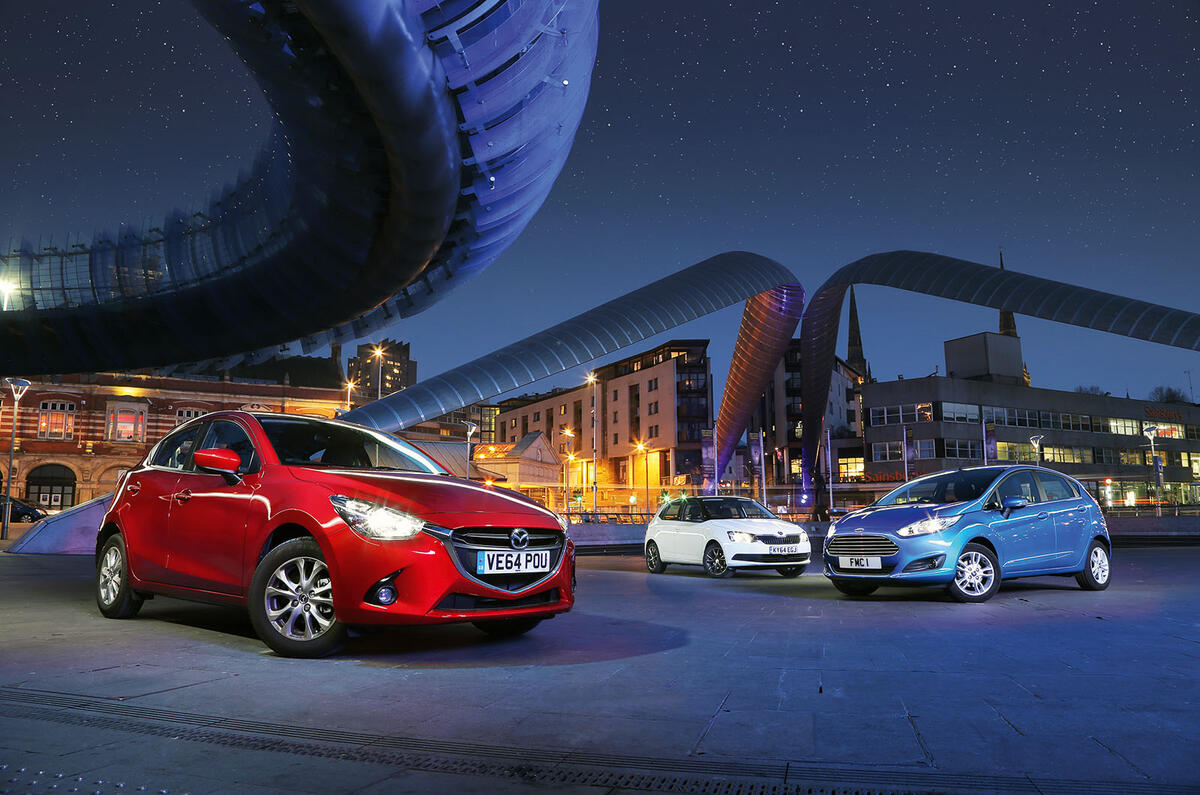
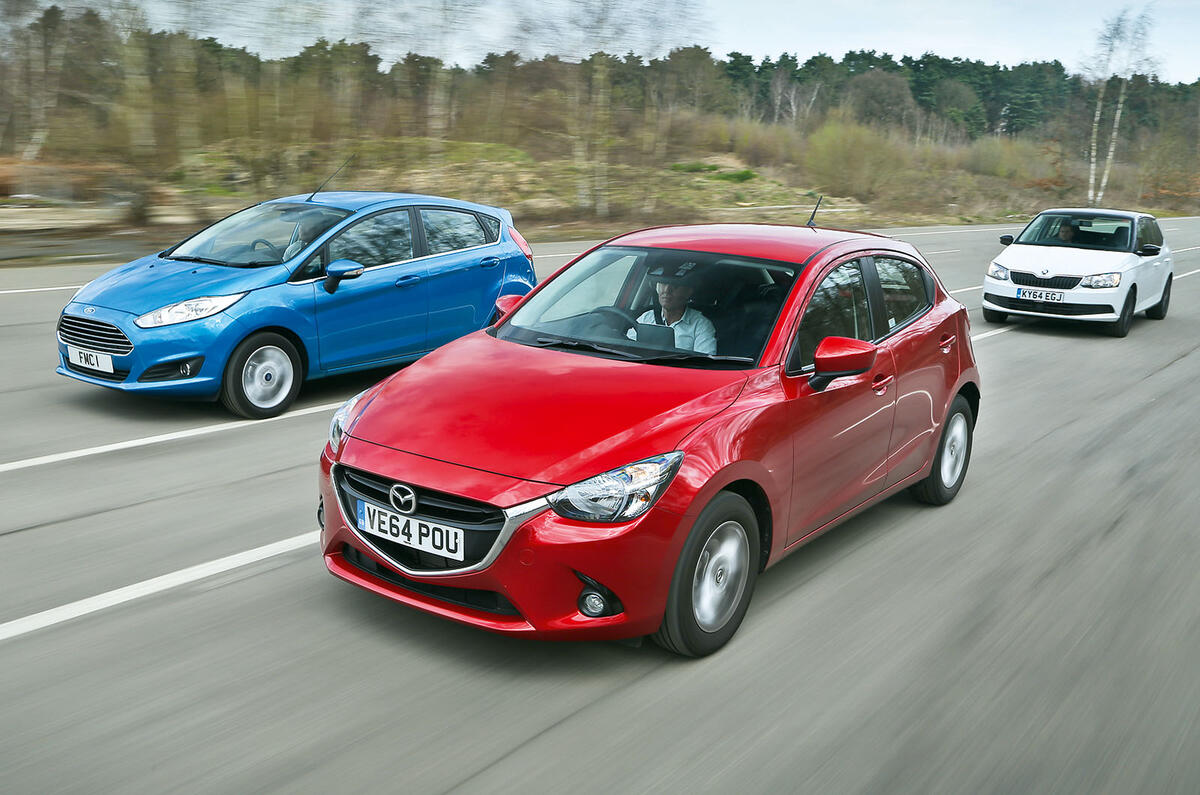
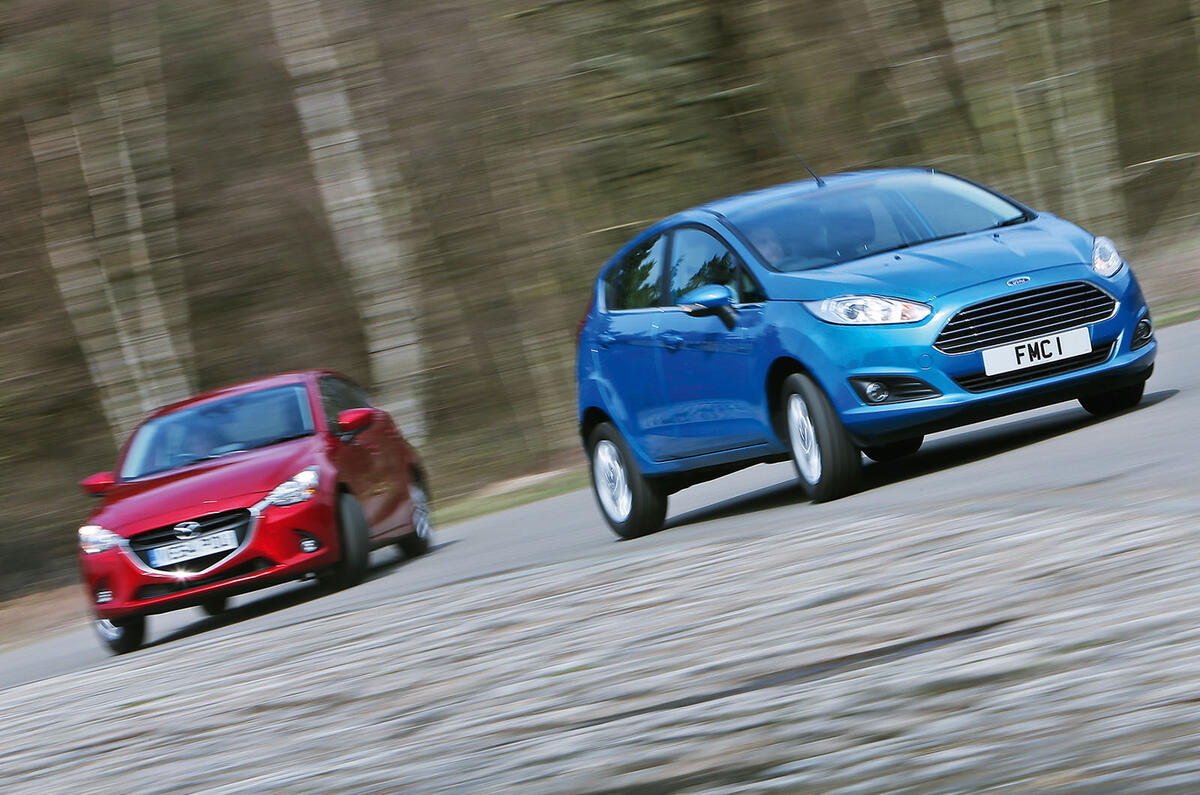
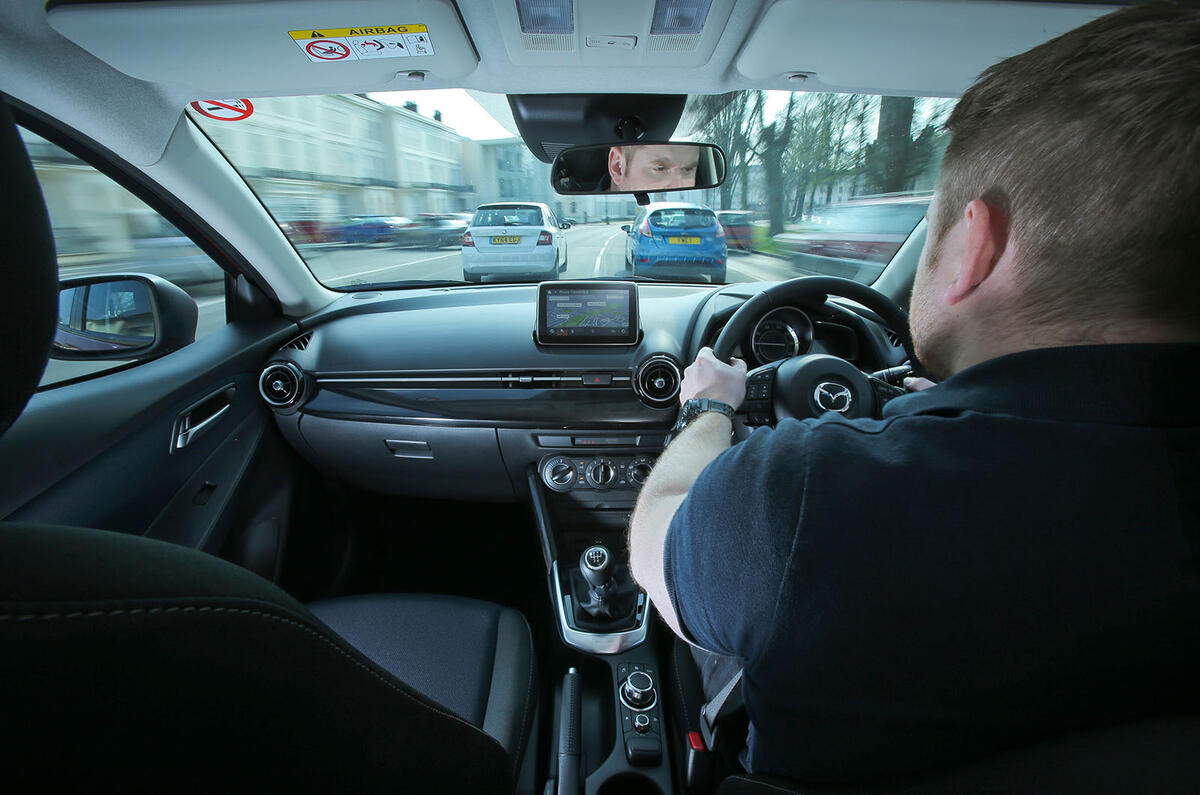
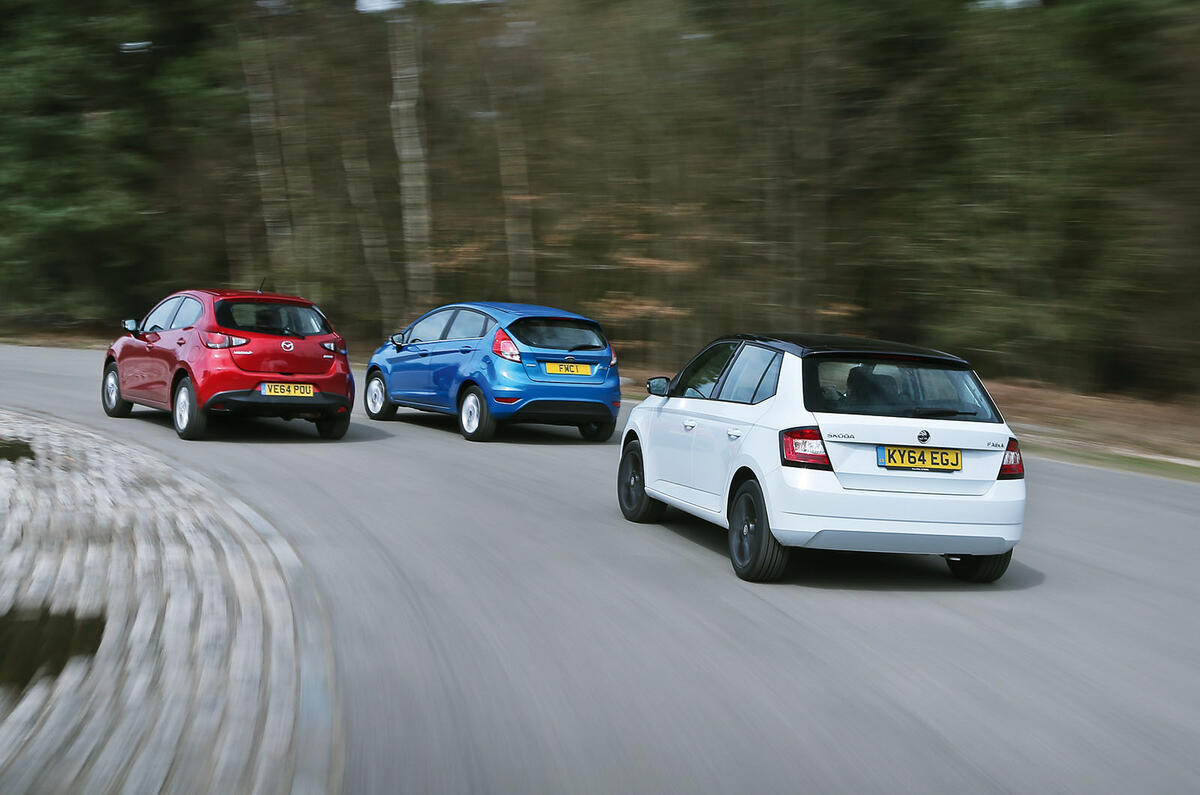

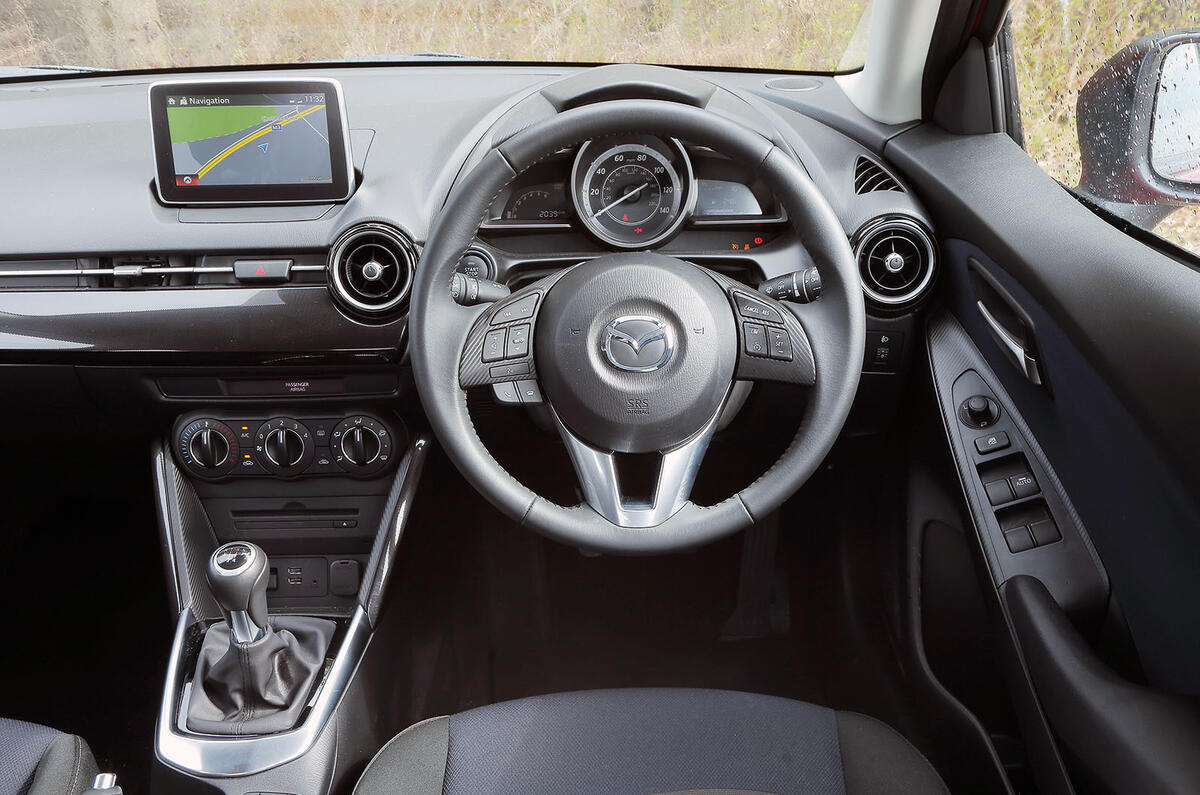

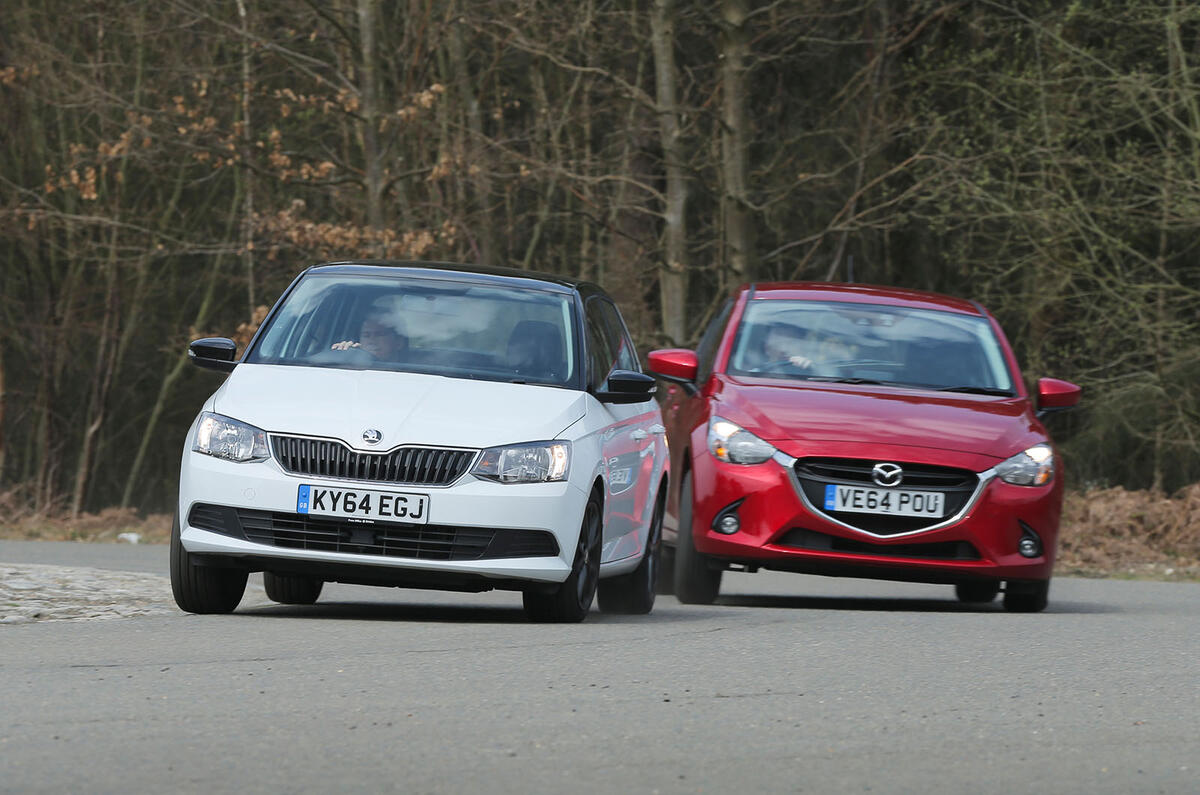
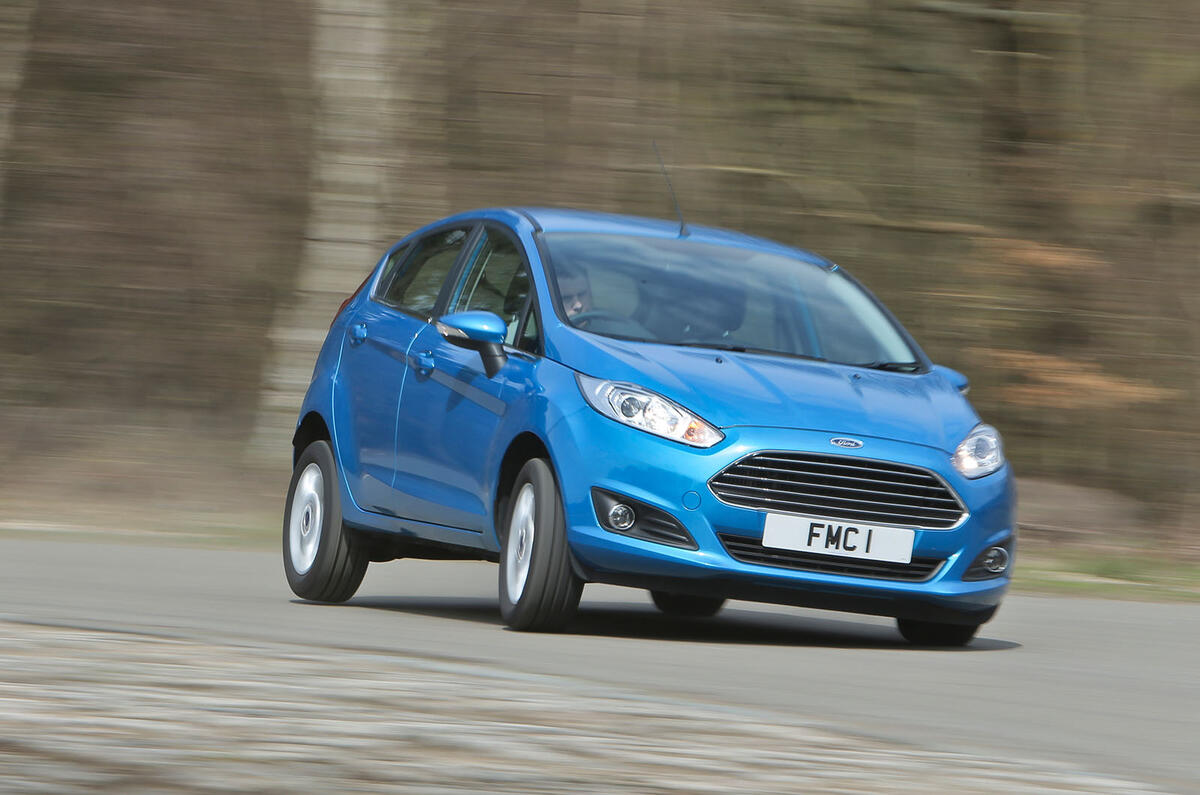
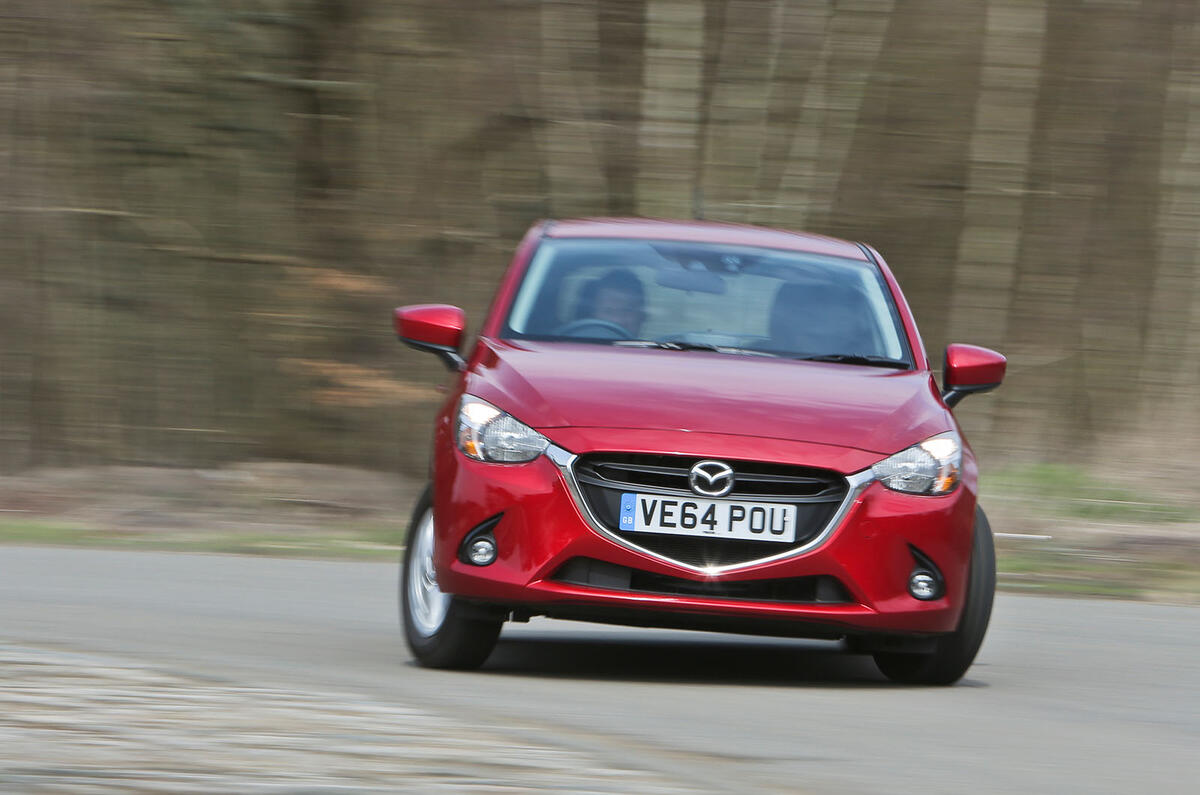
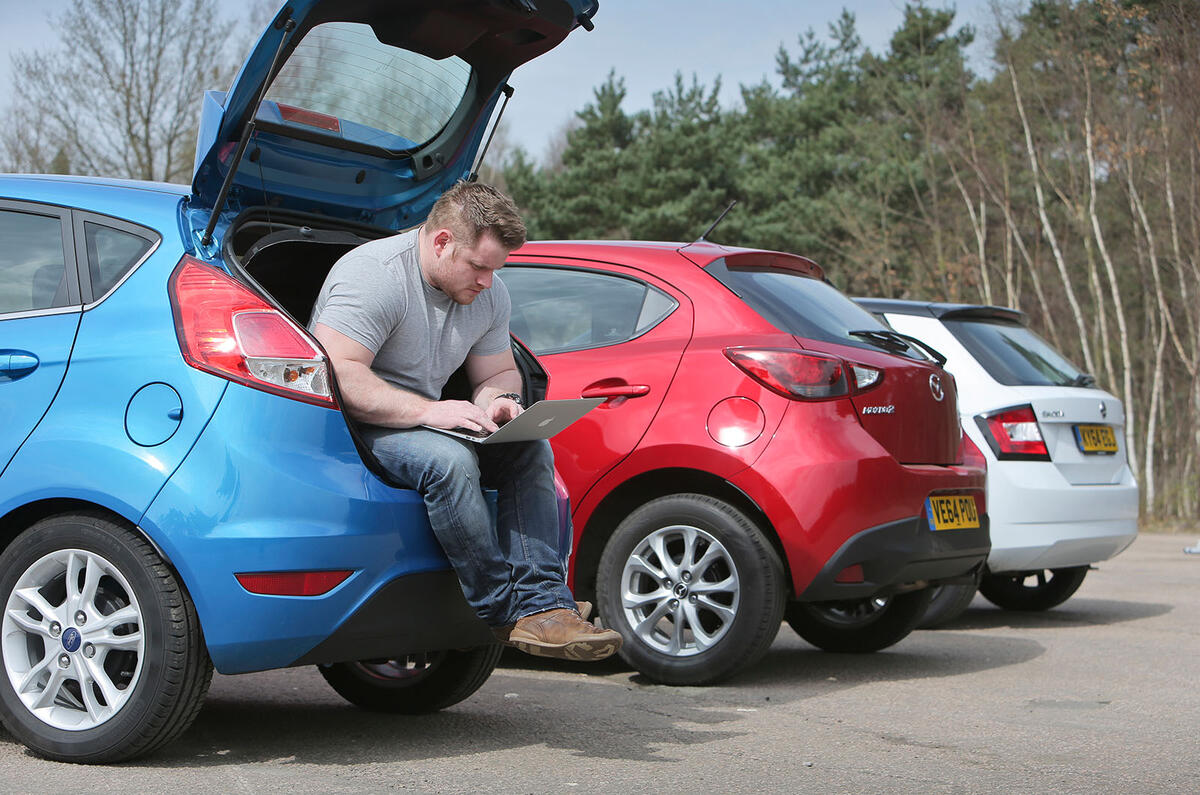
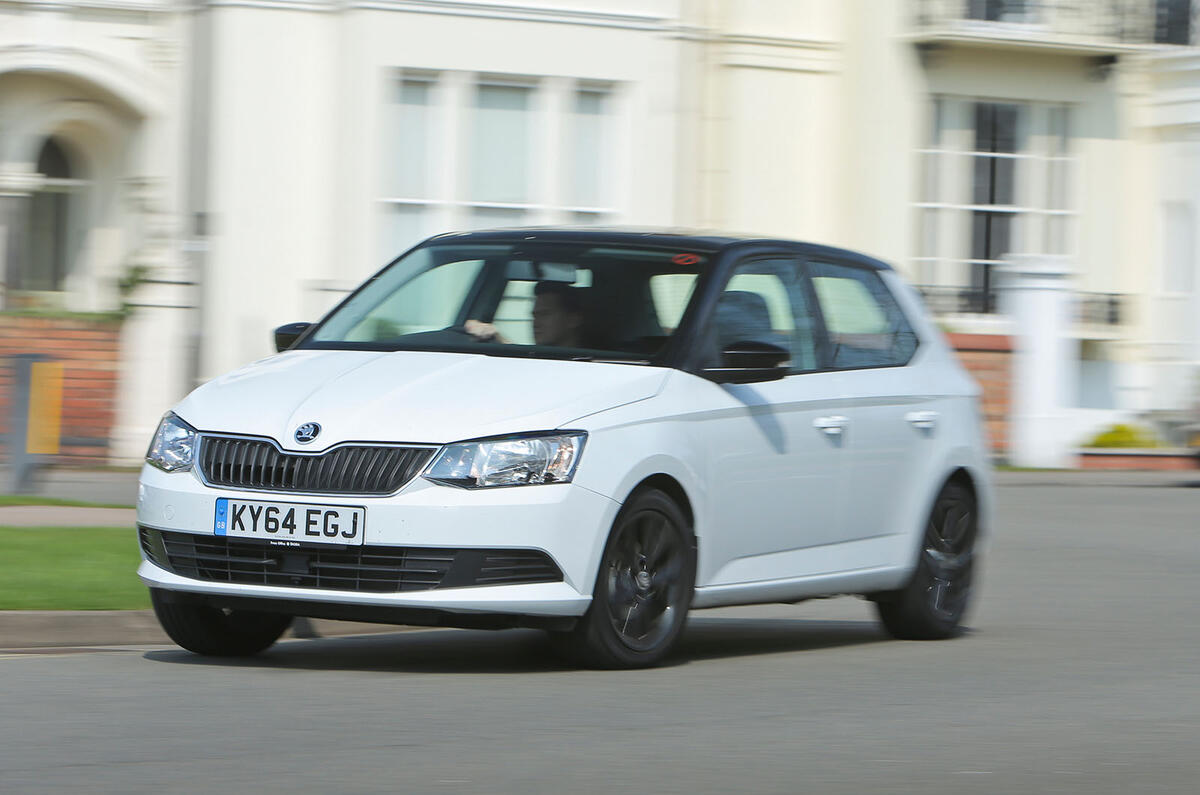
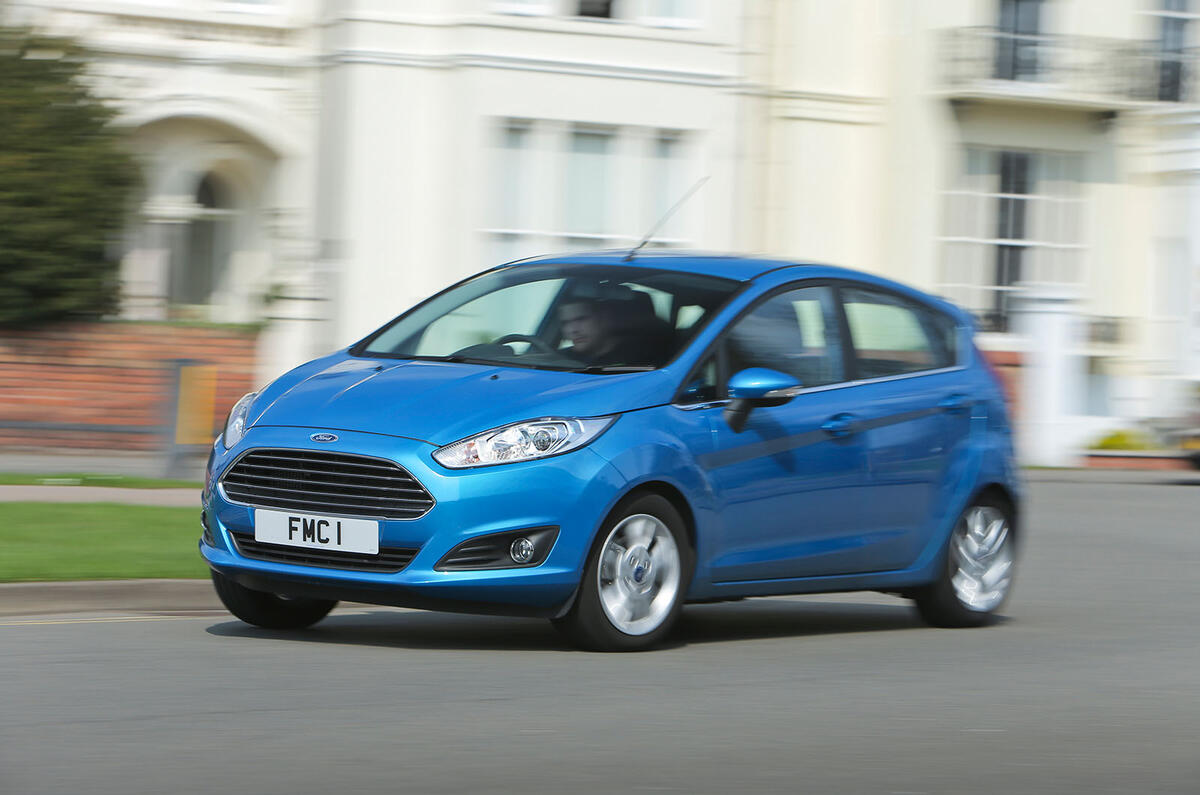
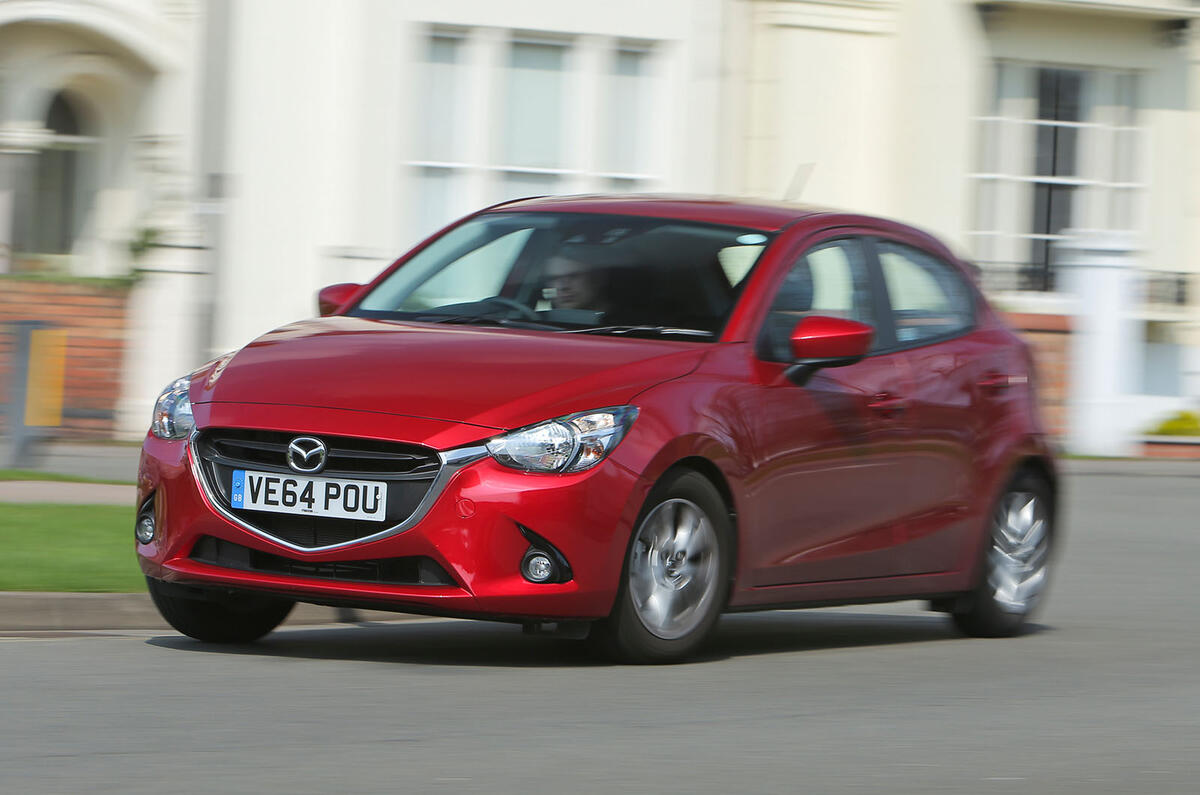
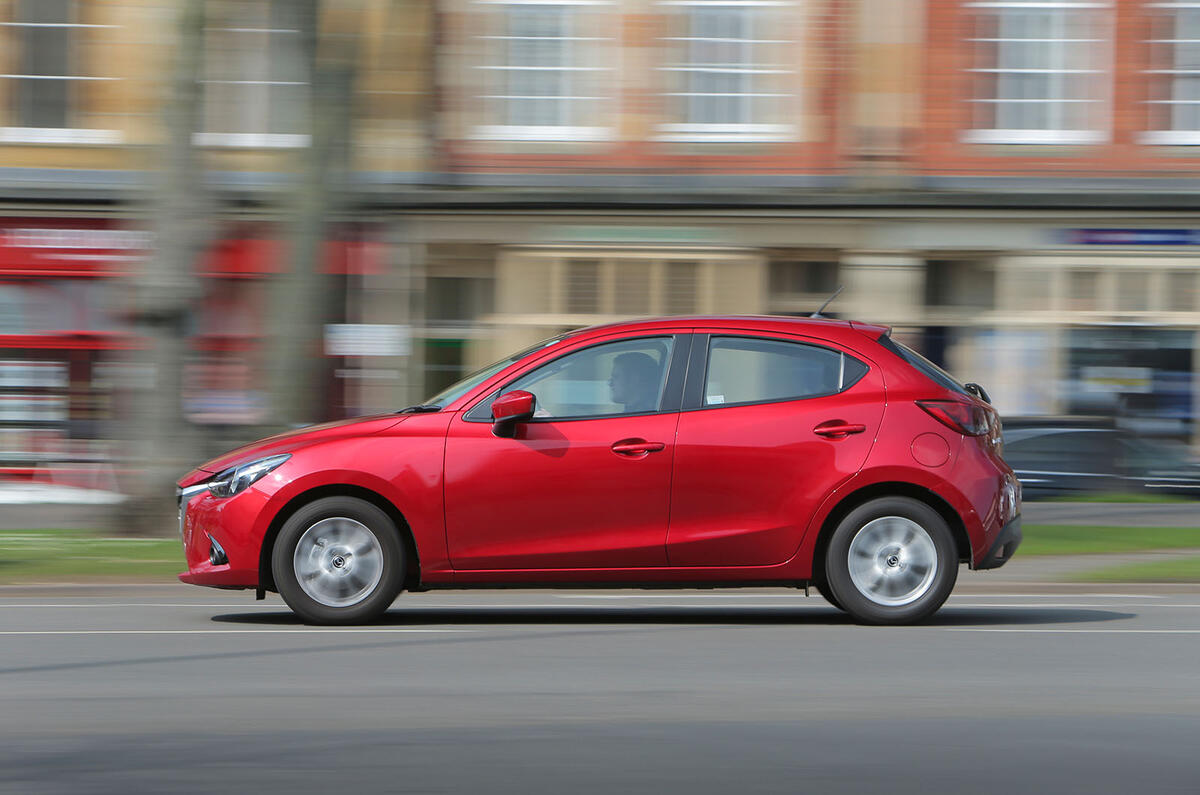
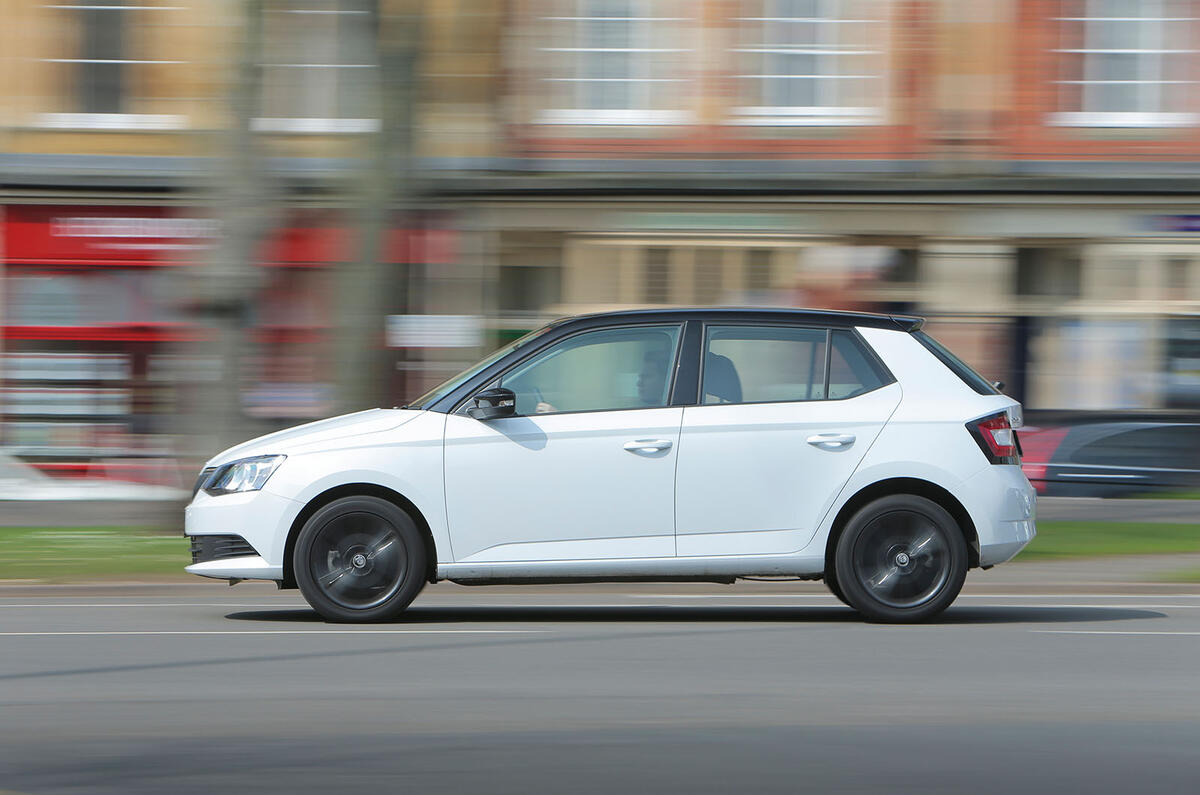
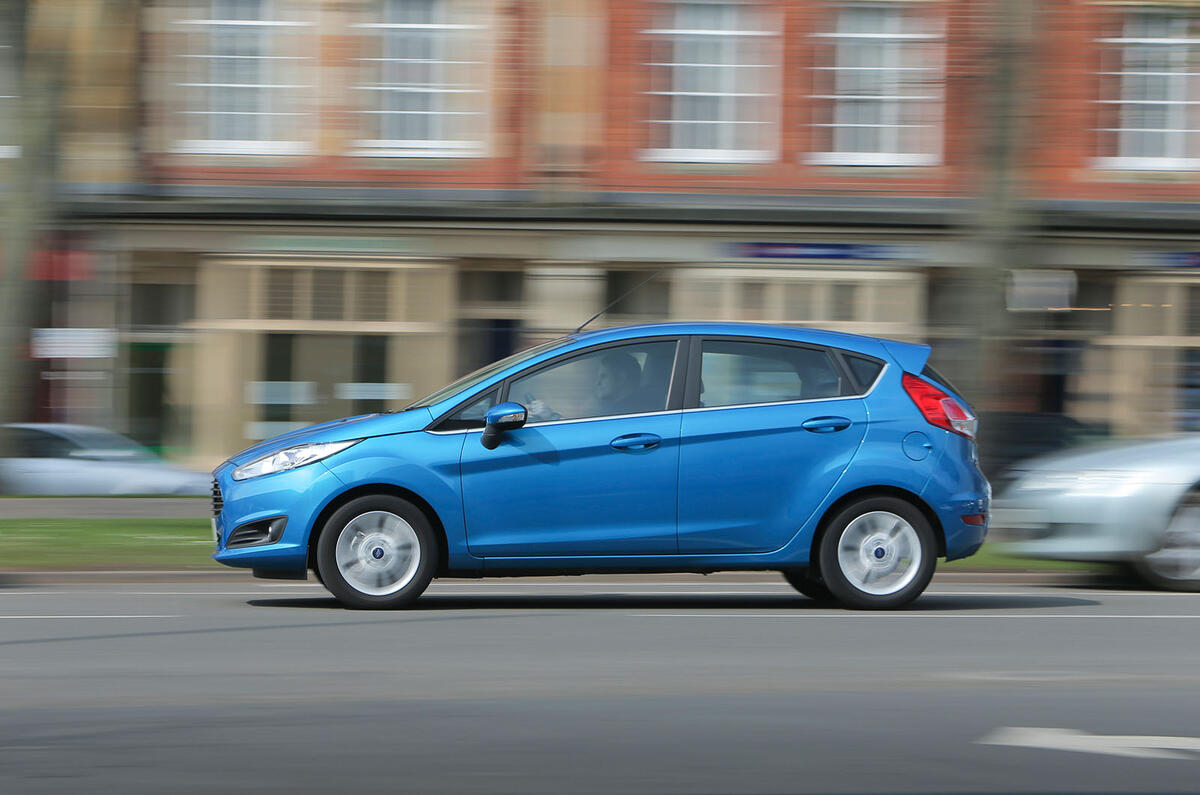
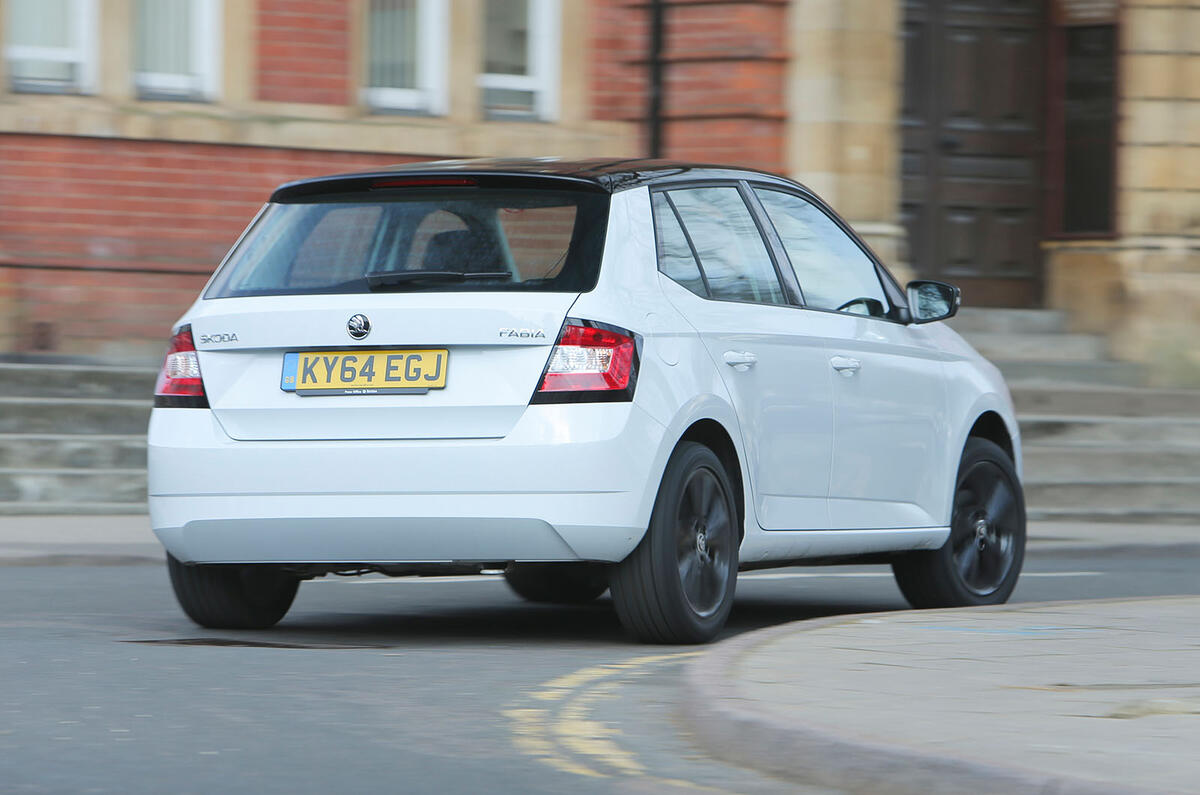
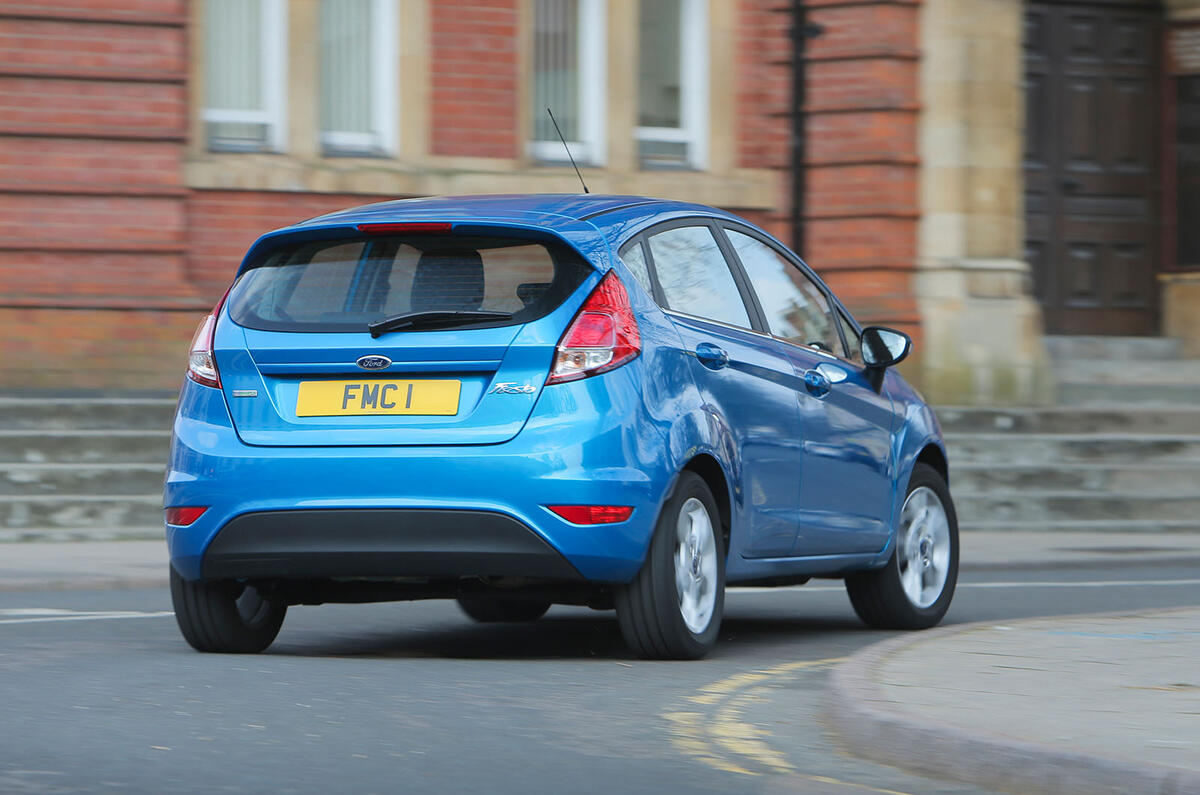
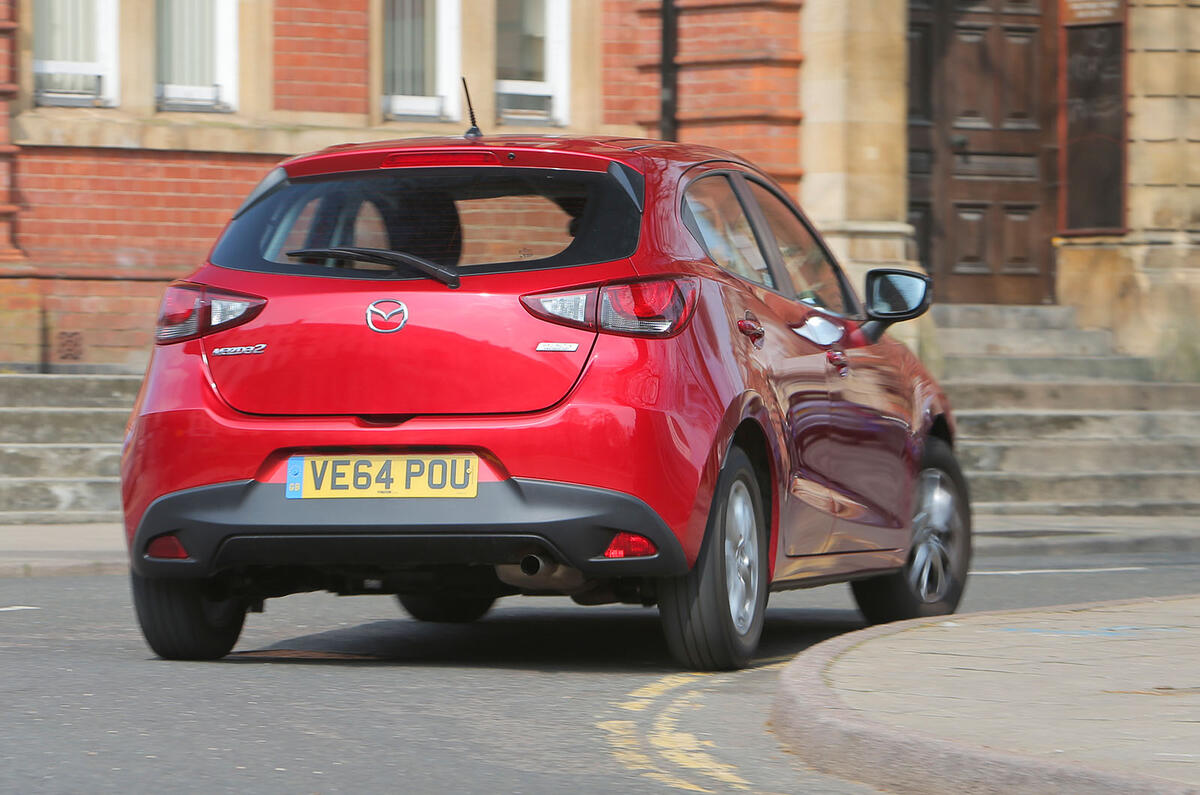
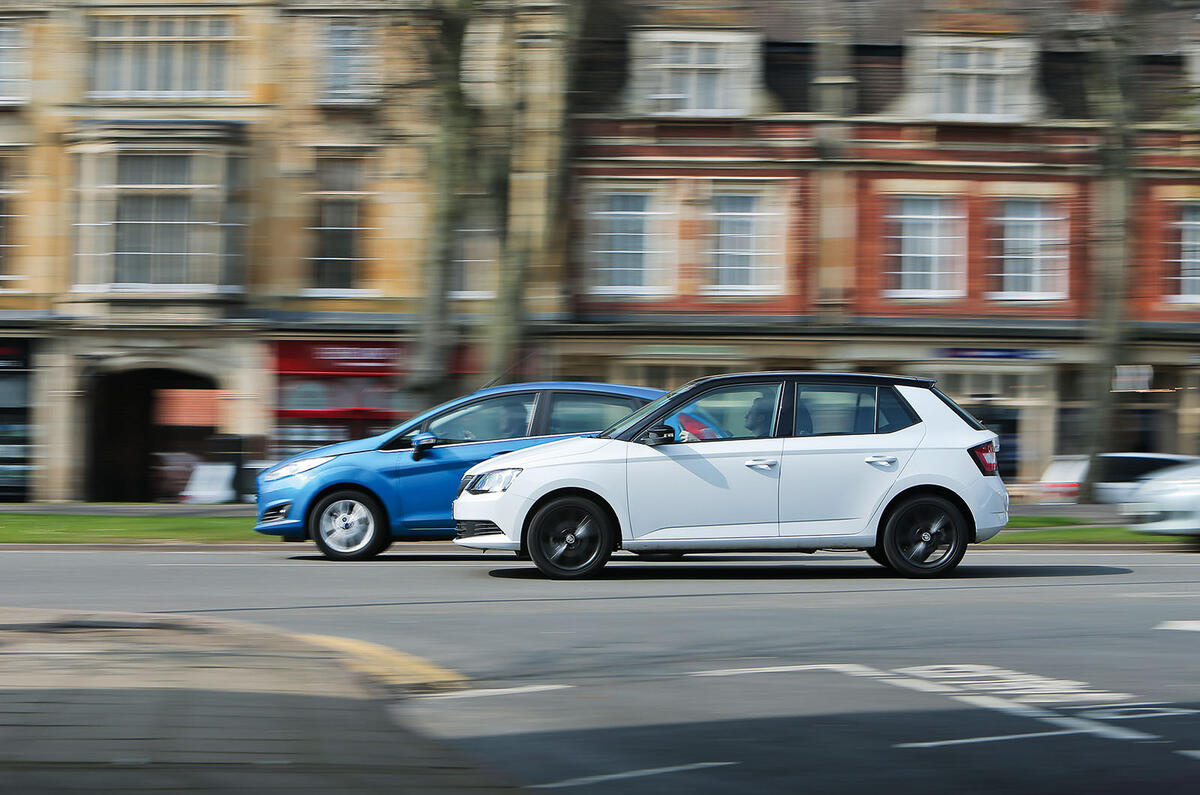
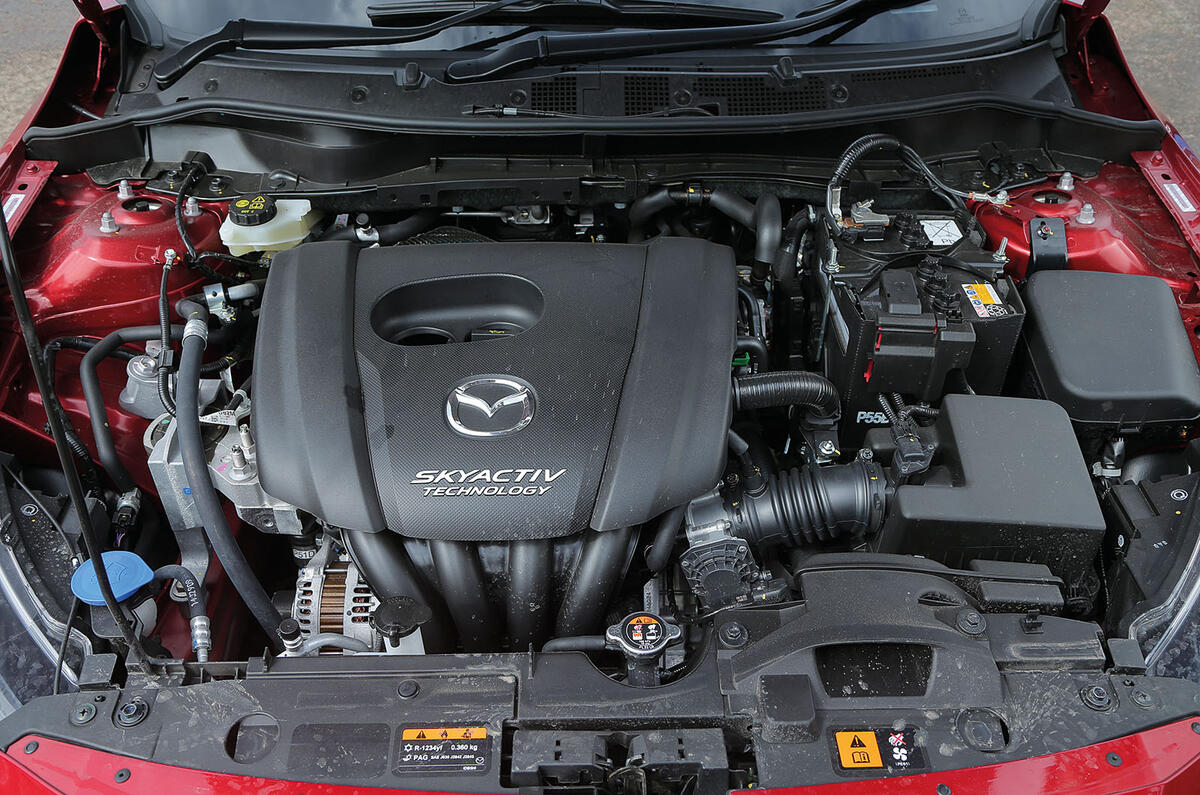
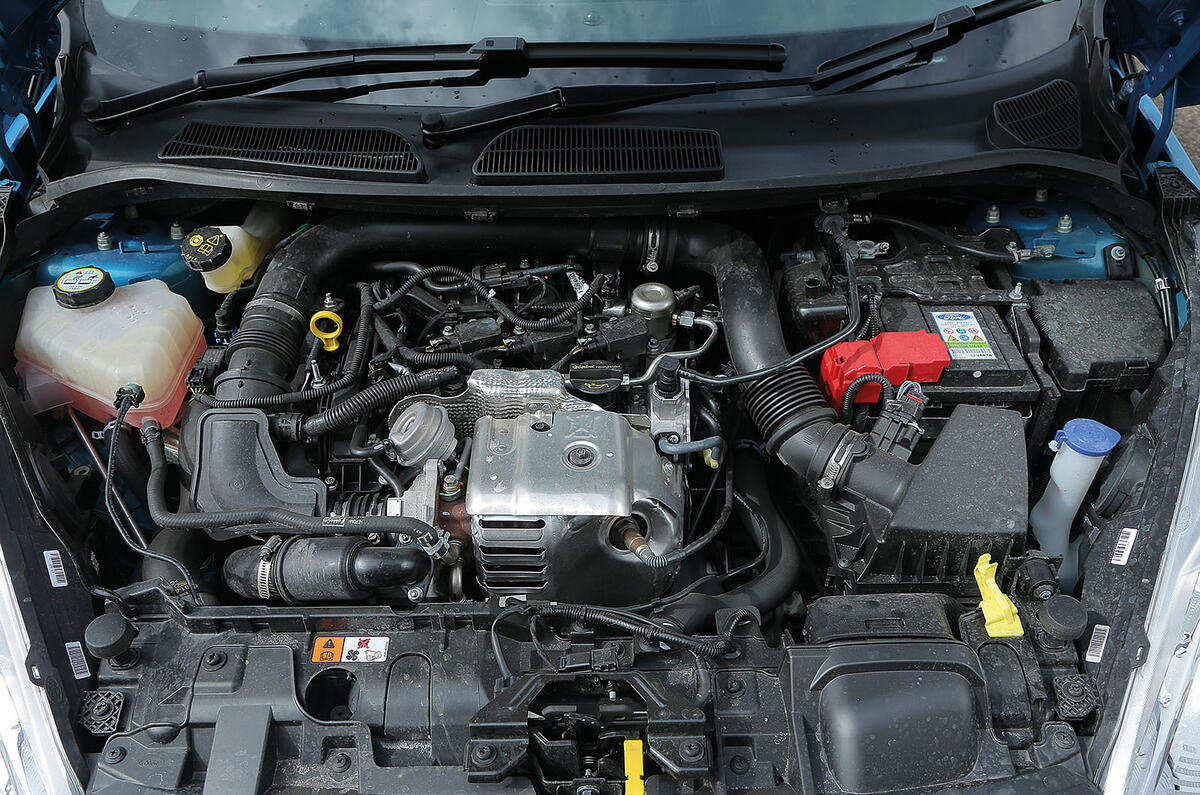
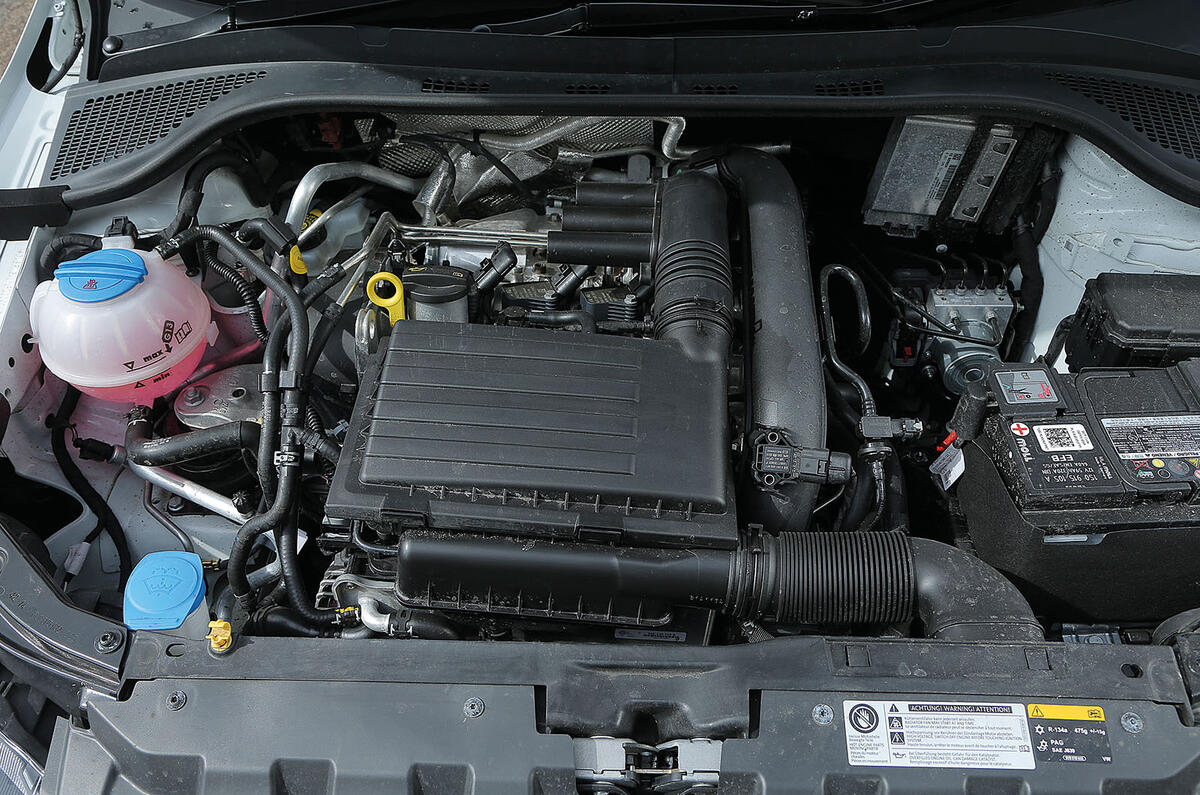
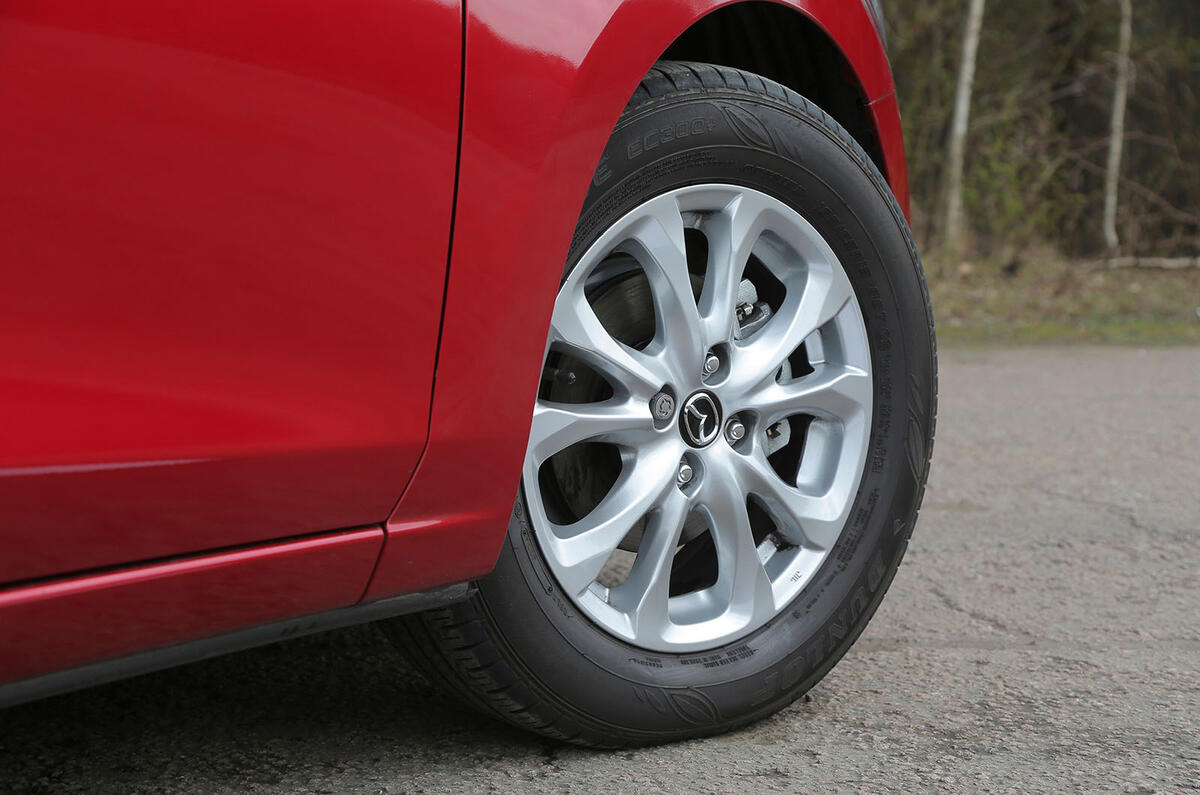
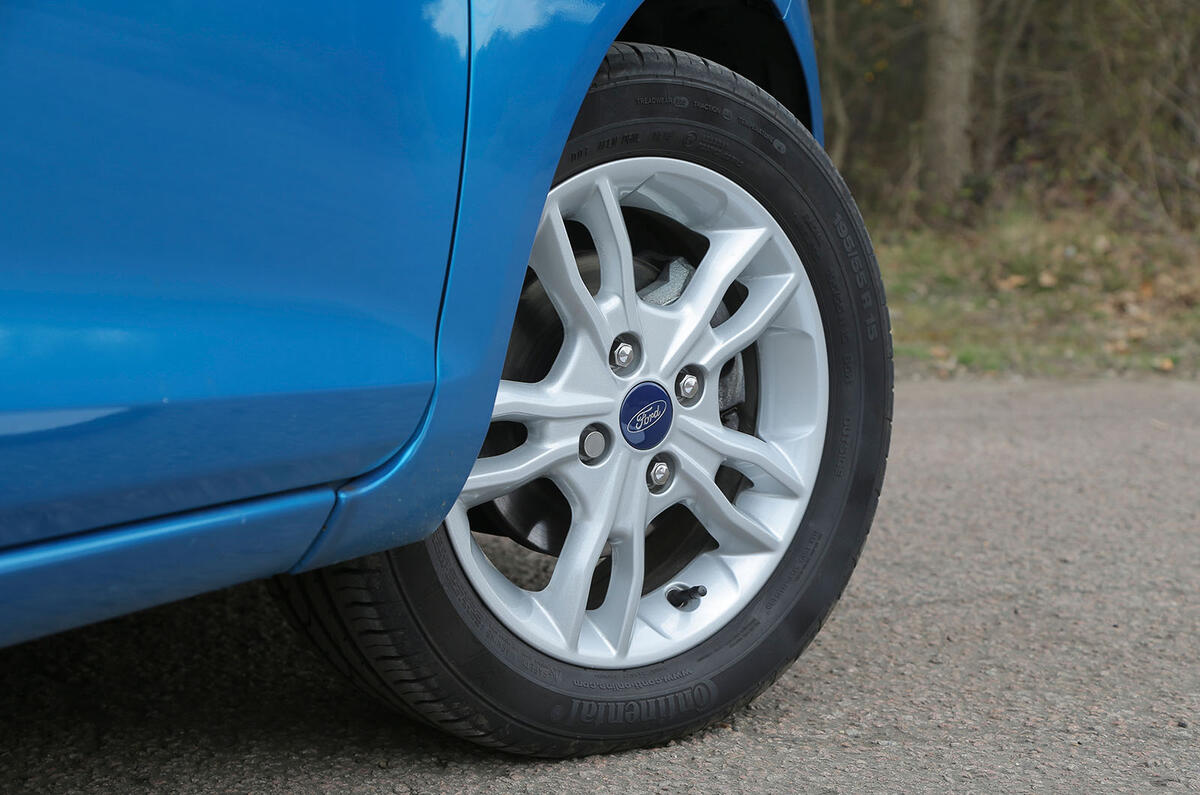
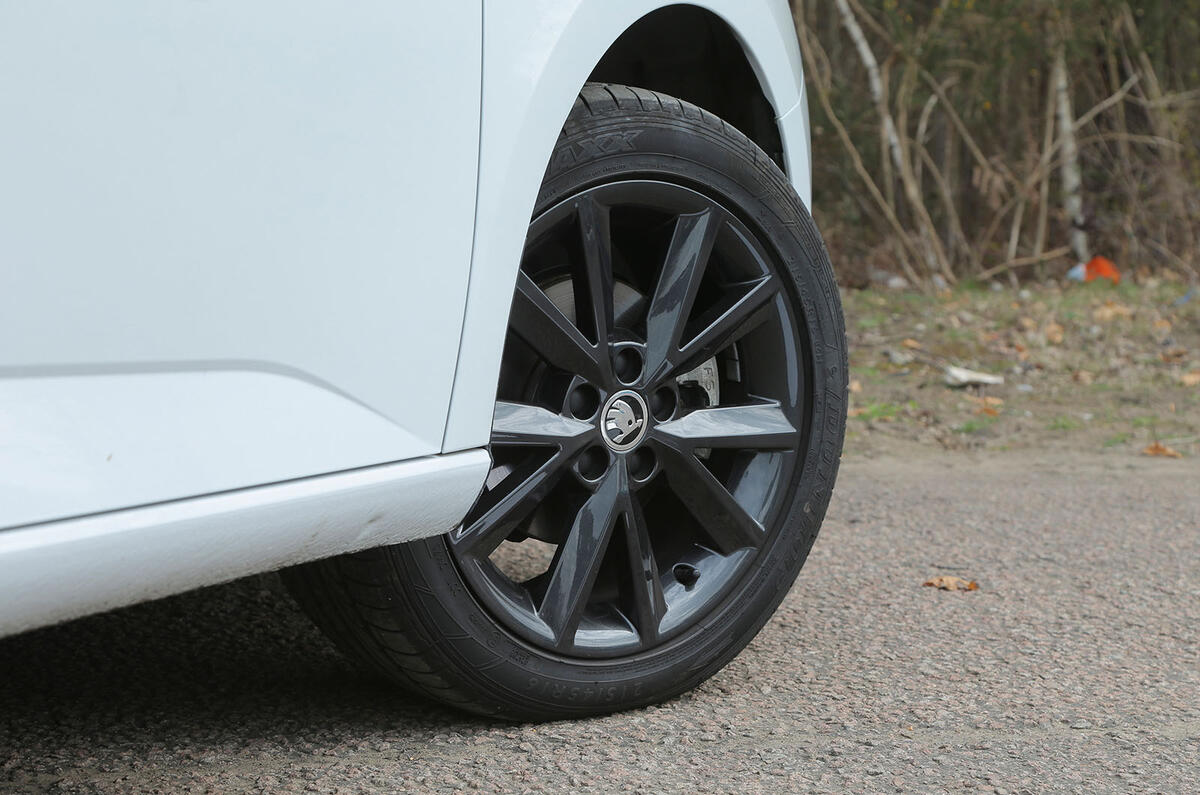


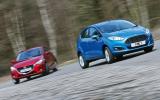




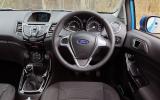

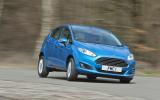



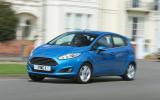

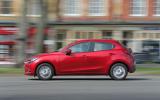

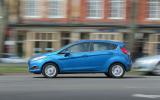

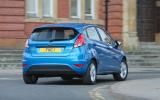





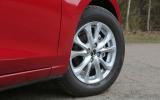

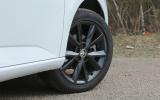


Join the debate
Add your comment
Conflicting reviews and verdicts
In particular they seem divided on issues of ride quality. The Telegraph thinks the Fiesta's ride too hard and not a patch on the Fabia. Is Autocar wrong on this? Somebody is. Or nobody is. Carbuyer thinks the Fabia's interior too low rent. Others think it's the bee's knees. You're not reading expert reviews, just a bunch of disparate opinions.
And the kind of handling tests they get put to are irrelevant for 99% of motorists who wouldn't recognize oversteer if it bit them on the backside, not that it ever would in a lifetime of normal motoring.
Try them for yourselves folks. That's the only way to know.
What's he saying?
Question mark..
Although I no longer owned a Ford I think they are very good compared to the competition, but most reviews are tinged with a hint of premeditated bias.
I have driven most of the cars tested as rentals and must say without a doubt the Fords of today are excellent cars and it is about time the reviewers take off their old and tired cliched remarks and judge a car on merit instead of perceived brand loyalty.